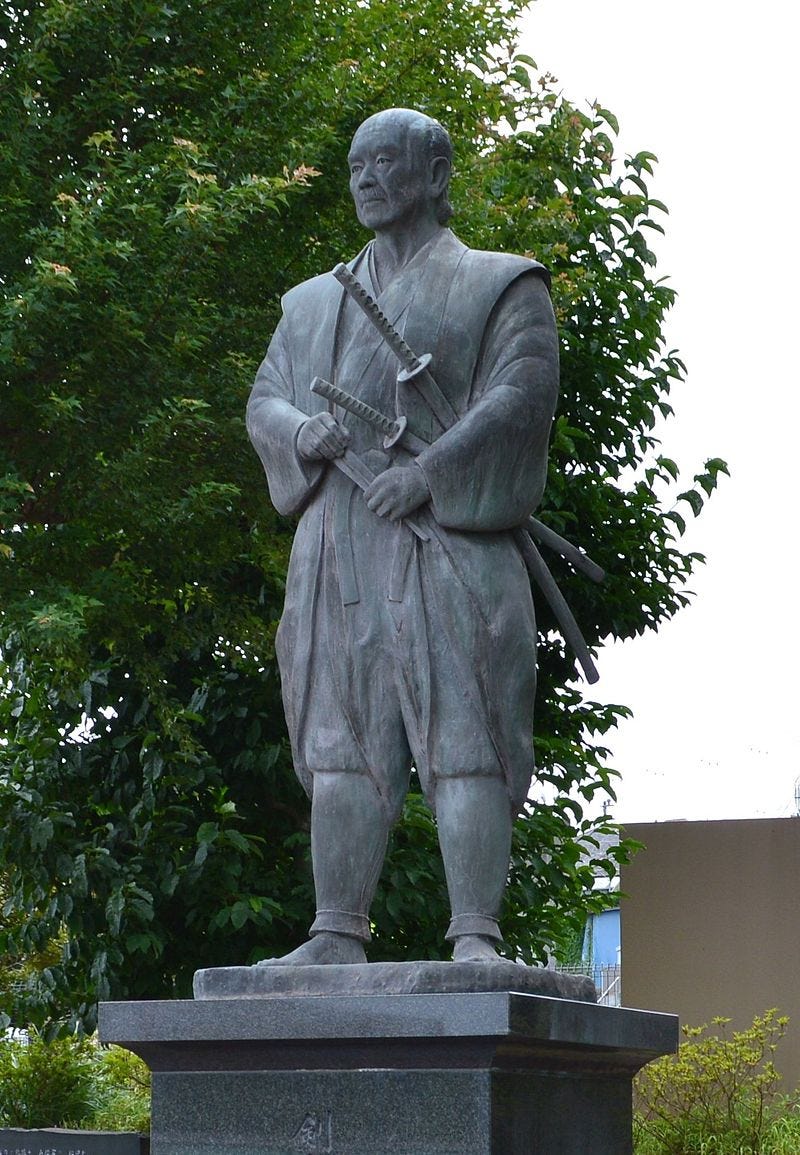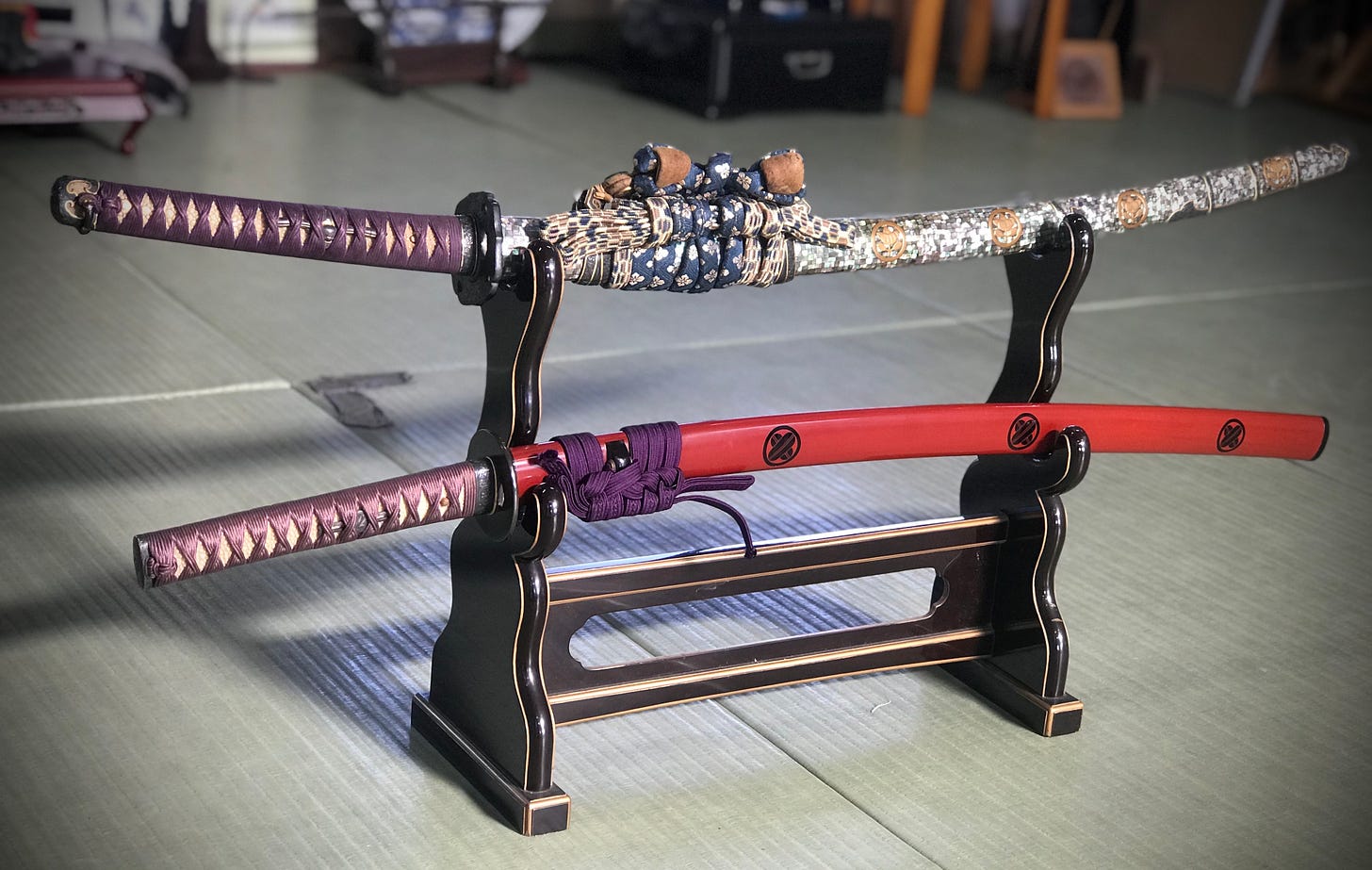As a legitimate successor to the Kashima tradition, and under the influence of the Katori Shintō-ryū (香取神道流), the Kashima Shintō-ryū (鹿島新當流) school emerged. The founder of this school, Tsukahara Bokuden (塚原卜伝), was adopted into the Tsukahara clan, a branch of the Tōbe Kikkawa (ト部吉川氏) family, which preserved the sword art of Kashima. Tsukahara Bokuden, who was a prominent disciple of Iizasa (飯笹), learned Katori Shintō-ryū through the Tsukahara clan and organised the family kenjutsu into a formal martial school system. In addition, the Kikkawa clan transmitted, along with the sword art of Kashima, the Chūjō-ryū (中条流) as ‘another school of kenjutsu’, which shows that multiple schools were already being studied and combined at that time. From Bokuden onwards, Kashima Shintō-ryū and Katori Shintō-ryū, known as the ‘Swords of Kashima and Katori’, began to exert a great influence on Japanese kenjutsu.

One hundred years after the birth of these pioneering schools, other schools emerged that integrated and refined principles from various traditions to develop a new theory of the sword. Notable among these was the Shinkage-ryū (新陰流), founded by Kamiizumi Ise no Kami Nobutsuna (上泉伊勢守信綱). In the mokuroku of the Shinkage-ryū school that Kamiizumi transmitted to Yagyū Muneyoshi (柳生宗厳), it is mentioned:
‘In ancient times there were the Nen-ryū (念流), Shintō-ryū (新当流) and Kage-ryū (陰流) schools, among countless others. I have perfected the secrets of these schools and have extracted the most curious of the Kage-ryū to call it Shinkage-ryū’.
This shows that Kamiizumi studied Nen-ryū and Shintō-ryū, and later learned Kage-ryū, the latter being a key influence in the creation of Shinkage-ryū.

From Kamiizumi, various schools derived from Shinkage-ryū developed through his disciples, such as Yagyū Muneyoshi, who founded Yagyū Shinkage-ryū (柳生新陰流); Marume Kurando (丸目蔵人), who established Taisha-ryū (タイ捨流); and Hikida Bungo (疋田文吾), who founded Hikida Kage-ryū (疋田陰流). These schools became an important movement in kenjutsu. In particular, the Yagyū Shinkage-ryū, passed down by Yagyū Muneyoshi as the legitimate line of Shinkage-ryū, was established in the domain of Yagyū no Shō (柳生の庄) and, with Yagyū Tajima no Kami Munenori (柳生但馬守宗矩), became the official school of the Tokugawa family. Later, his grandson Hōgyūke (兵庫助利厳), raised and educated by Muneyoshi, served Tokugawa Yoshinao (徳川家直), founder of the Owari Tokugawa lineage, passing on the lineage in the Owari Yagyū family (尾州柳生家).

During this period, Muneyoshi developed a close relationship with Konparu Zenchiku (金春禅竹), Zeami's (世阿弥) son-in-law and nō theatre master. In this exchange, Muneyoshi incorporated nō theatre secrets into his kenjutsu, developing a profound theory of the sword. In this way, kenjutsu integrated elements of other artistic disciplines, transforming it from a combat technique into a path of spiritual development and a guide for life. In this sense, Shinkage-ryū represents the beginning of the transformation of the martial arts into a high art or ‘bujutsu’ that transcends combat itself.




